The City of Venice
Art- Vedute & Venice
Traces of religion in Venice
My Vedute of Venice
- Art- Vedute & Venice
- Art- Vedute & Venice
Artist of Venice
La Biennale di Venezia
- Art- Vedute & Venice
Ornaments in Venice
My favorite pavillions at the Giardini
My favorites pavillons were the French, Korean and the Hungarian pavillons. First the Korean paviollon was an amazing experience because the room was filled of mirrors which reflect your image. It was very light and silent, and it was kind of embarassing because you see so many gleams. At the end, we could enter a room which was dark and sound proof. There were a group of ten people so we could hear the breath of people which was an interesting experience. Second, the French pavillon was two videos of someone performing a Ravel music sheet for left handed. I thought it was very meaningful because Ravel lost his right hand during WWII and this exhibition was displayed in the German pavillons. It was a very beautiful music which also show the reconciliation between France and Germany. Finally, the Hungarian pavillon was very interesting because it was a display of bombs from WWII produced in different countries. The artist combines the unexploded bombs with a sound, for example, one of them was a sound of people talking during a dinner, or a sound of a street and people rushing. I was an original combinaison.
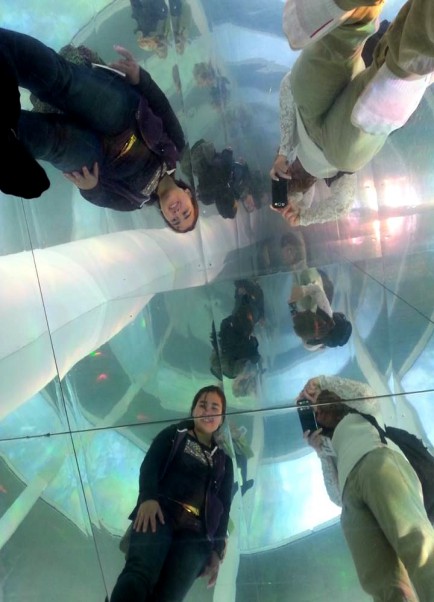
Link to the exhibition:
http://www.labiennale.org/it/arte/index.html
My Flag of Venice
Based on the gondolier's clothings
Focused one of the greatest Venitian music composer, Vivaldi, and my feeling interpretation one of his violin concerto
My Map of Venice


Giovanni Bellini was born in Venice to leading dynasty of painters. His father, Jacopo Bellini was a main protagonist n the rival of Venitian art and taught Giovanni and his brothers Gentile how to paint in his busy workshop.
One of Giovanni's sisters, Nicolosia, married one of their father's trainees, Andrea Mantegna. For several years, the classicism of the Paduan Mantegna exerted considerable influence on Giovanni in his early works The Agony in the Garden (1465). The artist also studied some of Donatello's works in Padua, which further contributed to Giovanni's work/ artistic maturity.
Sicilian artist A. da Messina visited Venice. He introduced the Flemish concern for detail and the special interests of central Italy to the city, which influenced Giovanni's work.
Giovanni's workshop became the center of Venetian art, the milieu in which a generation of painters was formed. His prestige spread beyond the Venetian Republic, when Albrecht Dürer visited Venice in 1506, he wrote that Giovanni "is very old and yet he is the best painter of all".
1430-52
1453-74
1475-76
1477-16
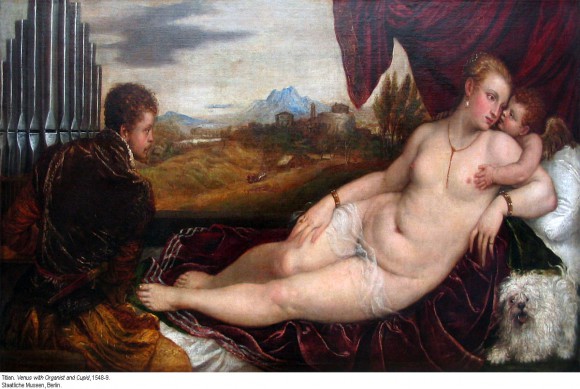
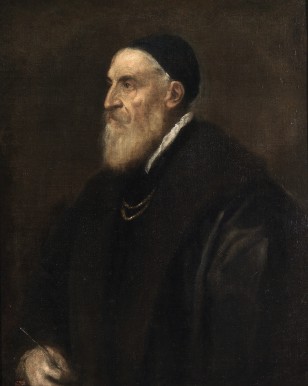
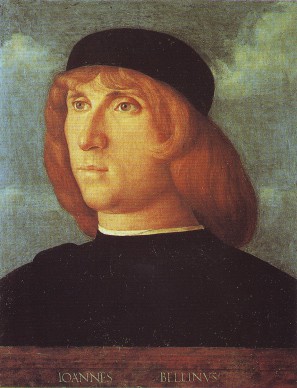
Titian entered the workshop of Gentil (1430-1507) and Giovanni Bellini at an early age. He went on to work with Giorgione, then the leading Venitian painter, and they became friends. They collaborated on a fresco of the Fondaco dei Tedeschi (German warehouse) in Venice.
After the early death of Giorgione in 1510, Titian received his first commissions for a series of frescoes in the Scuola del Santo at Padua. Zith the death of Giovanni Bellini in 1516, Titian stood unrivalled in the Venetian school.
Titian undertook more complex subjects. The Pesaro altarpiece at Santa Maria Gloriosa dei Frari strenghttened his reputation. Equally inventive in portraiture, allegories, devotional and mythological work, he commanded an international clientele.
During this period, Titian took high-profile portrait commissions, including that of the Holy Roman Emperor, Charles V. His paintings style became more tranquil and reflective.
Titian worked mainly for Philip II of Spain as a portrait painter. During this time, his painting was characterized by a more refined and subtle quality.
1499-10
1511-16
1517-50
1531-50
1551-76
ART THE WHOLE STORY by Stephen Farthing published by Thames & Hudson in 2010
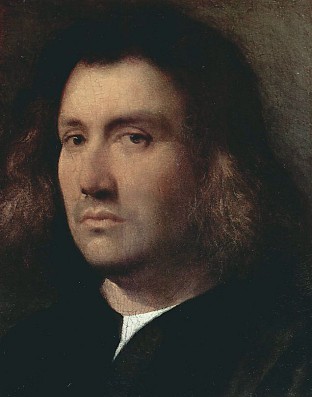
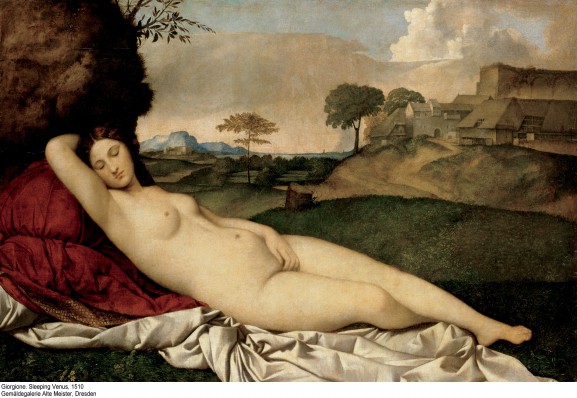
Very little is known about Giogione. He was born in Castelfranco and moved to Venice in c.1488, entering the workshop of Giovanno Bellini.
His early commissions included a portrait of Doge Agostino Barbarigo in 1500, the year he is said to have met Leonardo da Vinci in Venice, and an altarpiece in his home town (1504). The following year, Giorgione received his first major public commission: along with a group of artists including Titian, he was asked to paint frescoes for the Fondaco dei Tedeschi (German warehouse) in Venice, which was completed in 1508.
Only a handful of works can be confidently attributed to Giogione, partly because of his tendency to leave works unfinished. They include Laura (1506), The Tempest(1507), and Sleeping Venus (c.1510). Giogione probably succumbed to the plague that swept through Venice in the autumn of 1510, but his reputation as an innovator, both stylistically and in terms of artistic practice, has survived. He was the first painter to produce works for private collectors, as opposed to public or non-secular commissions. He was also a pionner in prioritizing the mood of a painting over its subject matter as in The Tempest.
1477-88
1489-
1505
1506-10